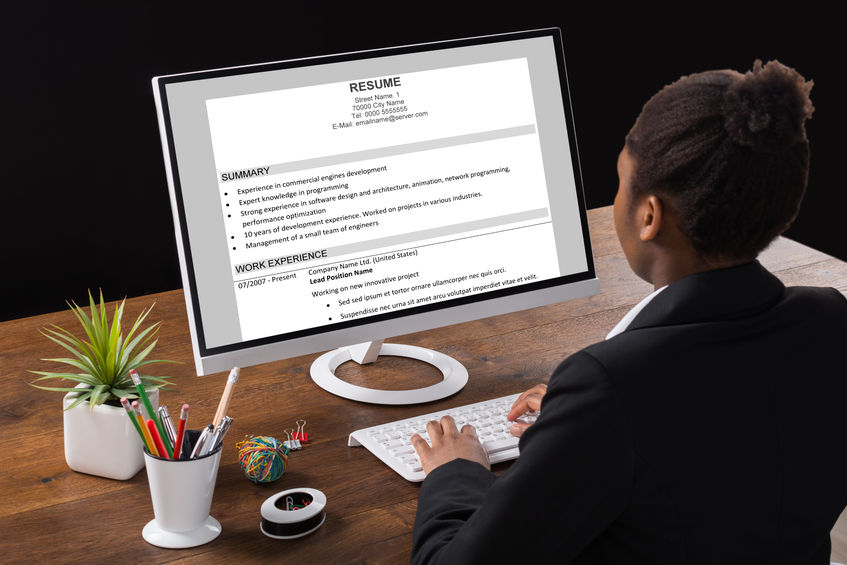Tips to Help You Develop and Update a Professional Résumé
Has it been a while since you last updated your résumé? Or do you want a quick “how-to” on writing one? Below are several tips to help you navigate this process and develop a professional résumé.
Always Keep It Updated
While this may be hard to remember, it is important to do it so that you are ready when a new job opportunity becomes available. If you haven’t kept your résumé current, start by going back and taking a look at past performance reviews, your job description, and your work calendar for the last few months (or years!) to jog your memory of what you do and what you’ve accomplished.
Some people get paralyzed by the idea of perfection. Instead of feeling like you need to have the most beautiful phrasing in the world before you start, begin by pretending you’re telling a friend what you do on a day-to-day basis, season to season. You can edit and refine your words later. This simple exercise can help you move from a blank page to a full résumé.
Looks Matter
There’s debate about how much time employers actually spend reading your résumé. It’s safe to assume that if they’re feeling generous, the maximum amount of time you’ll get on a first read is 30 seconds. So, while it may sound shallow, the aesthetics of your résumé really matter. If you give potential employers any reason not to want to read it (it’s too busy, it’s too long, and so on), they won’t. Along the same lines, think about the way we read (left to right, top to bottom), and use the prime real estate on your résumé accordingly!
Write Your Own Resume
Don’t have someone else do the writing for you. While it’s a good idea to ask others for guidance when writing your résumé, don’t be tempted to have someone else put it all together for you. The ability to use your own voice to describe your experience is a critical skill to have in your life. You know your story best, and employers will want to hear that version of the story when they read your application materials.
Writing your own résumé will also enable you to change it when you want, without having to go back to someone else and pay him or her to make the update. You want to be able to make tailored versions of your résumé for every application you submit, and having to go to someone for this each time will slow things down, and out-of-pocket costs will go up!
To write the most effective résumé:
- Be results oriented. Say what you did and why it matters. “Grew customers by 20% to 400K with new digital marketing programs which resulted in $150K in incremental sales.”
- Quantify when possible. “Taught 450 elementary students” vs. “Taught students” makes a big difference.
- Use bullets, and start them with strong and varied action verbs. Paragraph format takes too long for employers to read, and the thesaurus in MS Word is a goldmine.
Some final thoughts on writing your résumé:
- Your margins should never be smaller than .5 on all sides (at the smallest!).
- Send your résumé as a PDF whenever possible.
- Be mindful of the file name for your résumé. If you accidentally apply to Starbucks with “My Dunkin’ Donuts Résumé,” it’s going in the trash. “Résumé Version 284” isn’t the most strategic approach, either.
- Use spellcheck, but have someone else (like a career coach) take a look at it – finance and fiancé are both words, but you’re a lot more likely to use one of those on a résumé over the other!
Hopefully this helps you get started, which is often the hardest part. Good luck!
9 Effective Communication
Effective Communication Women Making History
Women Making History Grants & Funding Sources
Grants & Funding Sources Interview Prep
Interview Prep Impactful Leadership
Impactful Leadership Dressing for Work
Dressing for Work Dressing for Your Style
Dressing for Your Style Interview Style Tips
Interview Style Tips Women's Stocking Stuffers
Women's Stocking Stuffers Gift the Busy Traveler
Gift the Busy Traveler Airport Layover Activities
Airport Layover Activities Traveling & Eating Healthy
Traveling & Eating Healthy Travel Like a Boss Lady
Travel Like a Boss Lady The Dual California Life
The Dual California Life Gifts for Thanksgiving
Gifts for Thanksgiving Summer Reading List
Summer Reading List Top Leisurely Reads
Top Leisurely Reads New Year, New Books
New Year, New Books Life Lessons from a Sitcom
Life Lessons from a Sitcom Oprah, Amy or Amal?
Oprah, Amy or Amal?






